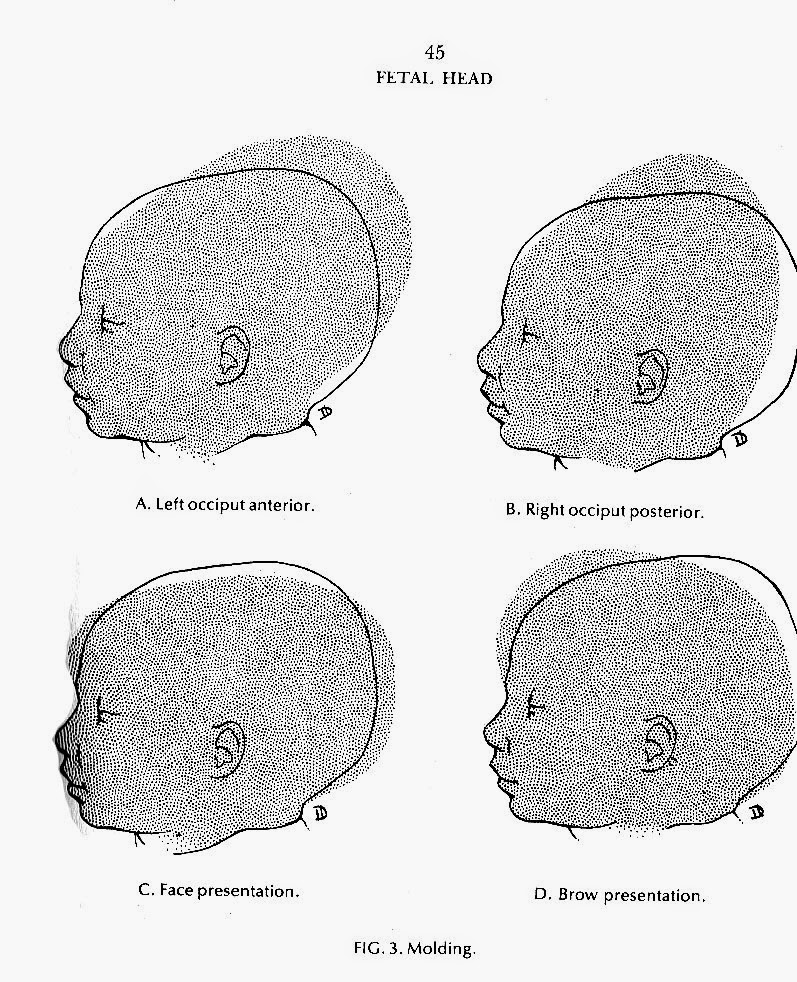Birth Detective: Why Didn’t My OP Baby Come Down? Part 1 of 3

Posterior presentation alone will not predict the course of labor. Posterior presenting babies can come within 3, 5, 24-hours, though some posterior labors take 36 hours or longer labors.
Add tight or short muscles, or a small pelvic outlet, and delays and interventions increase.
Spinning Babies take on the 3 Ps (Power, Passage, and Passenger) was discussed in the previous blog post.
Here’s Jessica’s story of her first labor and birth. Emailing back and forth together, we sought a likely reason her labor went to cesarean that may differ from what she was told.
I’ve cut out some redundancy (especially my own), edited my wordiness, and made the points easier for you to track the flow of conversation. Parenthesis shows verbatim content.
“My name is Jessica and I’m about 6 weeks postpartum. This was my first birth and we have a healthy baby boy. He was malpositioned and I ended up delivering via C Section due to extreme exhaustion and fever after 23 hours of labor.
I had a question for you about my delivery and was curious if you would be able to help me and provide some feedback for the type of labor that I had? (I did not know he was OP until the latter part of my labor).
I was 41 and 4 days or 11 days late. Original due date was 11/2 and I went into labor naturally (after a few days of stops and starts) on the night of 11/12
My concern is that my OB said that if I would have listened to him and been induced, I could have had a vaginal delivery.
“I was a low risk pregnancy and his heart rate showed no sign of decel throughout my labor.
After my water broke (around 7cm), I asked for the epidural due to the intolerable back pain.
I ended up getting to 9.5++ in about 5 more hours after that and got stuck there for 2.5 hours.
I developed a fever of 101 and my white blood cell count was super low and felt like I had NO energy left to give. I just wanted him to be out and begged for the C section.
His head would not come down and was very long coned at delivery from trying to fit!
“At an rate- I was made to feel like I did the wrong thing by not letting him induce me a day earlier and thus ended up in a C section.
“What is your experience with OP labors and induction? He was very stubborn and barely moved in my belly (aside from his feet and hands). I’m not so sure he would have turned if I was induced.”
Gail’s Reply:
“Dear Jessica,
I am so sorry for the distress that statement of blame has put into your birth memory. Your labor was hard enough.
You labored fantastically well with a posterior baby! You got to 9.5++ – And what a gift to your baby to have spontaneous labor, this shows he started labor with good hormones and readiness.
Personally, I do not believe that 24 hours would make a difference in your labor pattern.
I am not aware that induction has been shown to be that effective in rotation. Pitocin can be, but induction as the path to an easier birth does not have sufficient proof.
“The statement that an induction 24-hours before would have prevented this cesarean is very upsetting to me.
“Time can be a factor in birth outcome, but not the key factor once baby is term, and 24-hours is too short a time. Most often, labor ease is not about time, progress is about head-to-pelvis angles and “room” for the baby, which are made by making room in the pelvis through muscular and ligament techniques. [In labor,] maternal positioning [may] open the diameters of space at the level of the pelvis where baby is waiting for help.
“Your answers to these questions will help me to understand if my own assumptions are warranted.
1. Do you have a photo of you baby’s molding? That will help me understand his position over the last hours of your labor. Flexed or extended (chin down or up) or posterior or did he rotate?
 |
| From Oxorn and Foote, Molding shapes tell us how baby came into pelvis |
[For the blog, I’m going to add why I asked this question. Seeing the immediate molding will help me identify the angle of baby’s head. This indicated which head diameter was coming through the pelvis. Molding will give clues to whether baby was at the brim or deeper in the pelvis. Flexion (chin tucked to chest) gives a smaller diameter to the head and extension (chin up) makes the head seem larger because more of the head is trying to come through at once.]
2. Did you have Pitocin in this labor? Were you offered it?
3. How low in your pelvis, if at all, did your baby get?
4. Did you push at all? Whether your body’s own urge or directed by the nurse/doctor?
5. What size head did your baby have?
6. What positions were you in over the last 2.5 hours of labor [while at 9.5++ cm dilation]?
stressed at the end and pressured for time?
“Please know that I ask all of these questions with compassion to you. You really were in an “extreme sports” situation and it sounds like you were there without the kind of support one would hope for in such an exerting physical experience.
Please hold your sweet baby and forgive both of yourselves, for you both did the best you could in the limited knowledge given to you for this birth. You showed your strength and your maternal fire, Jessica! I so wish I could give you a big HUG!
Bless your heart!”


